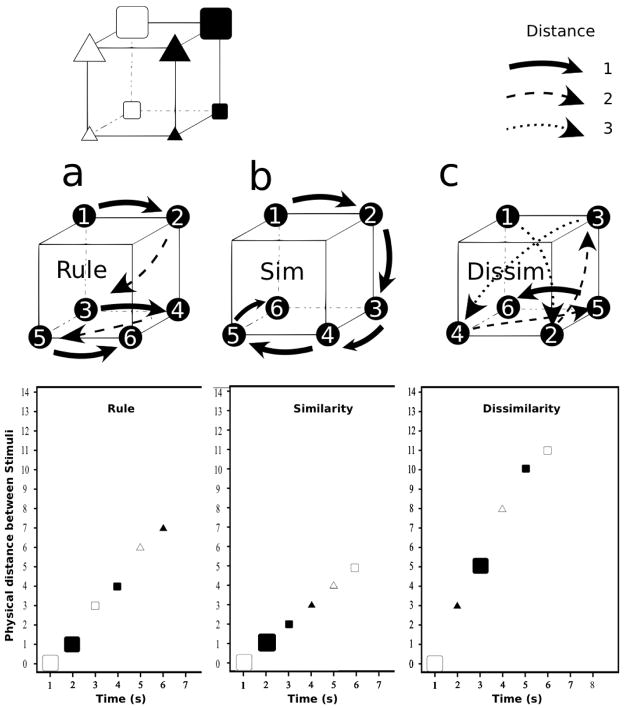Figure 2.
Example of three sequences from the category structure “square or small”, representing six items (top left cube). Note. The six items are replaced by black numbered circles on each of the three cubes to simulate their sequencing. In each of the three cubes, the presentation order is indicated by the numbers from one to six and by the arrows. The distance between two consecutive objects is described by the type of arrow: solid (one edge, or one feature difference), dashed (two edges), or dotted (three edges). In the Rule condition, the objects are presented in three clusters, within which the solid arrows are parallel and go in the same direction. The regularity of the rule is related to two factors: the separation of the clusters (dashed arrows) and the similarity between the objects in the same cluster (solid arrows), both of which facilitate the formation of small groups. In the Similarity condition, the inter-stimulus distance is minimal. All the objects are linked to each other by solid arrows, which can potentially make a unique chunk of six objects. In the Dissimilarity condition, the sequence is characterized by a maximal inter-stimulus distance. The three plots at the bottom show the distances between the stimuli as a function of presentation time (1 second per item). For instance, the first plot shows two distance leaps in the Rule condition, which can facilitate the identification of three chunks. The leaps are more numerous, larger, and less regular in the Dissimilarity condition, while there are no leaps at all in the Similarity condition.

